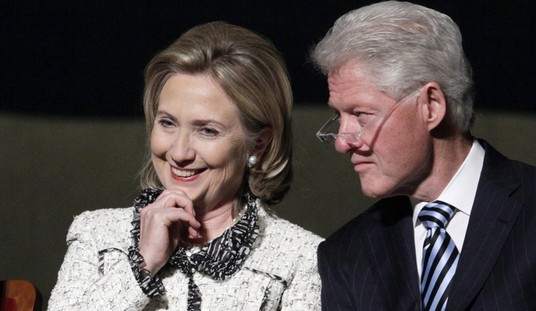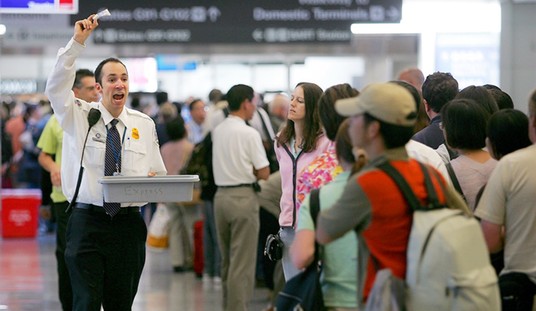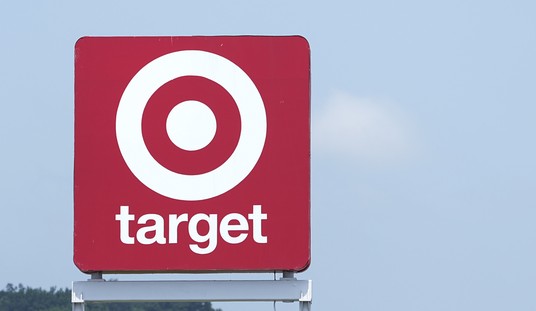The centerpiece of my thesis (discussed here and here) that Mitt Romney will win Tuesday’s election is his consistently strong showing among independent voters (ie, voters who identify as neither Republicans nor Democrats) across the majority of national and state polls, pretty much regardless of whether those are polls he’s winning or losing. On that score, I believe the polls; if they’re wrong about the independent vote, my analysis is essentially irrelevant. But if they’re right, I believe I’ll be proven right. If Romney goes on to win independents nationally by 5+ points and carry independents by more than a few points in states like Ohio and Wisconsin, he will win.
Obama can only overcome that kind of deficit among independents by decisively winning the partisan turnout battle – indeed, the polls that show him winning nationally or on a state-by-state basis do so almost uniformly by projecting a decisive advantage in Democratic turnout – but when you look for evidence outside of the polling samples themselves of that Democratic turnout advantage, you won’t find it.
There are two main arguments currently circulating for why Obama will win in spite of these factors. Both are premised upon the notion that the Obama-favoring polls are correctly projecting an electorate on the order of 2008’s D+7 (D 39/R 32/I 29) electorate, in which Obama’s turnout advantage will outweigh his loss of independent voters. I dealt on Wednesday with the first of those: Nate Silver’s polling model, which simply assumes that state-level polls are correctly projecting the turnout, on the theory that state polling averages have historically been trustworthy.
The other main argument comes from Josh Marshall. Marshall’s thesis is that independents are supporting Romney because the ranks of independent voters have been swelled by “an exodus from the GOP to the right”:
In other words, a lot of people left the Republican party, in identification terms. But they didn’t become Democrats. And it doesn’t seem (at least from the politics of the last two years) like they became more moderate of ‘centrist’ in ideological terms. They simply reidentified themselves as independents… I think in a lot of cases they actually re-identified because the GOP wasn’t right-wing enough, call it a Tea Party exodus from the GOP.
…[W]hat does not seem in doubt is that a lot of people who had called themselves Republicans started calling themselves independents, notwithstanding the fact that there’s little evidence they became less conservative.
And if that’s the case, you can see without much problem how Romney could be winning independents: because a lot of those independents are people who used to be Republicans. Or to put it another way, the pool of independents got a lot more conservative without changing the overall composition of the electorate. You just had a zero-sum transfer between Republican and independent.
This is a plausible-sounding theory, if you think independent voters are some sort of strange new phenomenon never before seen on the American electoral landscape, and Marshall backs it up with a colorful line graph showing the results of what he describes as various national party ID surveys. But it does not stand up to scrutiny.
Let’s look at a screenshot of Marshall’s chart; you can go click over to TPM if you want to play around with the various bells and whistles on it:
First of all, as Marshall himself admits, “we keep this data set of ‘adults’ rather than registered or likely voters. That makes it somewhat different from the voting electorate. …These are polls which simply ask people over 18, how do you identify in partisan terms.” As anyone who follows elections even remotely closely knows, polls of “all adults” are completely worthless, and a campaign whose supporters are citing polls of “all adults” rather than registered or likely voters six days before an election is doomed.
Second, notice something about the math here: Marshall is citing a collection of surveys that say the population is 32.5 D/25.2 R/33 I at present – which adds up to 90.7% of the people. What happened to the other 9.3%? As of the line in the middle representing the 2010 election, he shows the population as 34.2 D/30.2 R/28 I – again, 92.4% of the people, with 7.6% unaccounted for. Around Election Day 2008, it shows 39.4 D/30.6 R/25.2 I – 95.2% of the population, with 4.8% unaccounted for. It’s impossible to translate those kinds of large omissions into a useful tool for analyzing the electorate. (In fact, Marshall shows independents outnumbering Democrats – and if that happens, I promise you, Obama is toast).
Third, it doesn’t match up to the actual voter turnout. Exit polls in 2008 show 39% D and 31% R, numbers consistent with the chart, but 29% rather than 25% I. For 2010, it’s way off: Marshall’s chart has the population at 30.2% Republican and a D+4 advantage for Democrats, when in fact we know the exits showed a D 36/R 36/I 28 electorate. Somehow, the 7.6% of the people not accounted for turned out to almost all be Republicans. Marshall makes no effort to test how any of these surveys (or his rolling average of surveys) has matched up historically to the actual electorate, unlike my comparison of the track record of the Gallup and Rasmussen party ID surveys (both of which he mysteriously leaves out of his average) dating back over multiple elections. I will trust the people who have done this before and been proven reliable.
If it was true that success with independent voters was the result of defectors from the party, you would expect recent and longer-term history to show an inverse relationship between success with independents and partisan turnout – that is, you’d expect to see Republicans doing better with independents when GOP turnout is low, and Democrats doing better with independents when Democratic turnout is low. There is, in fact, some evidence that that was true before 1984, when a lot of independents and “Reagan Democrats” started self-identifying as Republicans. But since then, if you look at the presidential election years and the last two off-year Congressional elections (2006 and 2010), what you see in general is more like the opposite relationship: parties tend to do better with independents when they are turning out a lot of their own partisans. This chart shows the percentage of Democrats and Republicans in the electorate each of those years, along with each party’s share of the two-party vote among independents (that is, I dropped out the percentage of independents voting for Ross Perot, John Anderson, etc.):
As you can see, Democrats did well with independents in years like 1996, 2006 and 2008 when Democratic turnout was up, indicating that good partisan environments/candidates drew Democrats to the polls and attracted independent voters. Republicans did better with independents in 2010 when Republican turnout was up. Independents were closely divided in 2000 and 2004. This is what anybody who has spent any time working in the fields of campaigns, polling or election punditry would expect to see – strength with independent voters nearly always goes hand-in-hand with the party-base enthusiasm that drives good voter turnout. A big Democratic turnout year and small Republican turnout year at the same time as a big Republican surge with independent voters is out of whack with history.
I don’t doubt that, anecdotally, a fair number of people left the GOP after 2008 to join the long-time Perotista faction and build a core bloc of Tea Party-friendly independents. Rasmussen’s surveys suggest that a good chunk of those people came home to the GOP by the time of the 2010 election, and if they didn’t, they were replaced by other Republicans, because GOP turnout in 2010 was the best it had been since 2004. Marshall’s theory that Republicans have collapsed to something resembling 25% of the electorate is frankly inexplicable in light of the 2010 elections (and the 2012 recall election, in Wisconsin).
For an example of why this makes no sense, let’s look at one of the latest pieces of evidence outside the polling that supports a more Republican electorate: as Ed Morrissey notes, a recent study shows voter regstration across 8 states that register voters by party (FL, NC, CO, NV, NM, IA, PA & NH; states like OH & VA don’t) shows a net 1.3% increase in Republican registration since 2008 and a net 2.5% decrease in Democratic registration, while independent registration has boomed, up 14.4%. You can read that registration data to show that being an independent is still a lot more popular choice than being a Republican these days; you can’t sensibly read it to show that the growth of independent voters is the result of a decreasing base of Republican voters, and you can’t possibly read it to show that the total share of Republicans and independents is holding steady or declining relative to the Democrats.
I would be very shocked if Republicans are just 25% of the voters in this election. I bet Josh Marshall would too.
















Join the conversation as a VIP Member